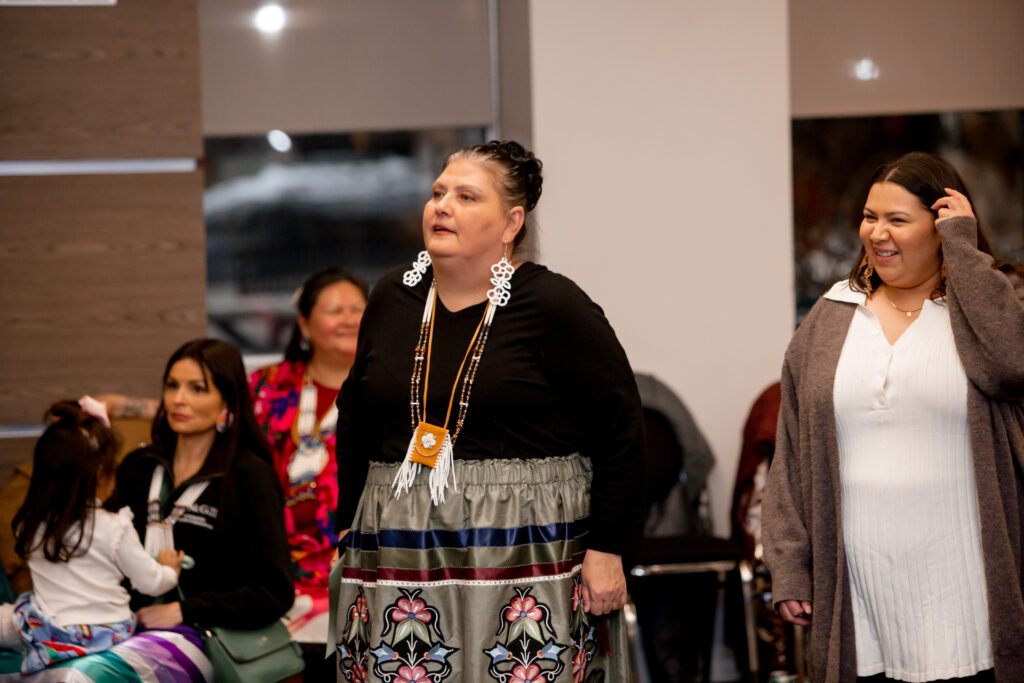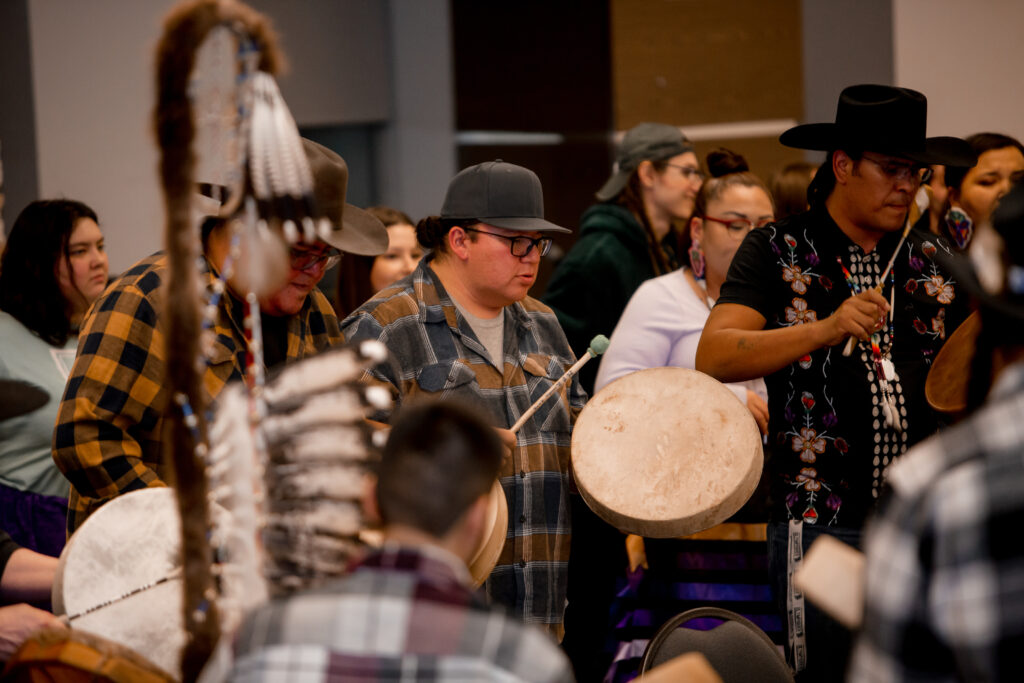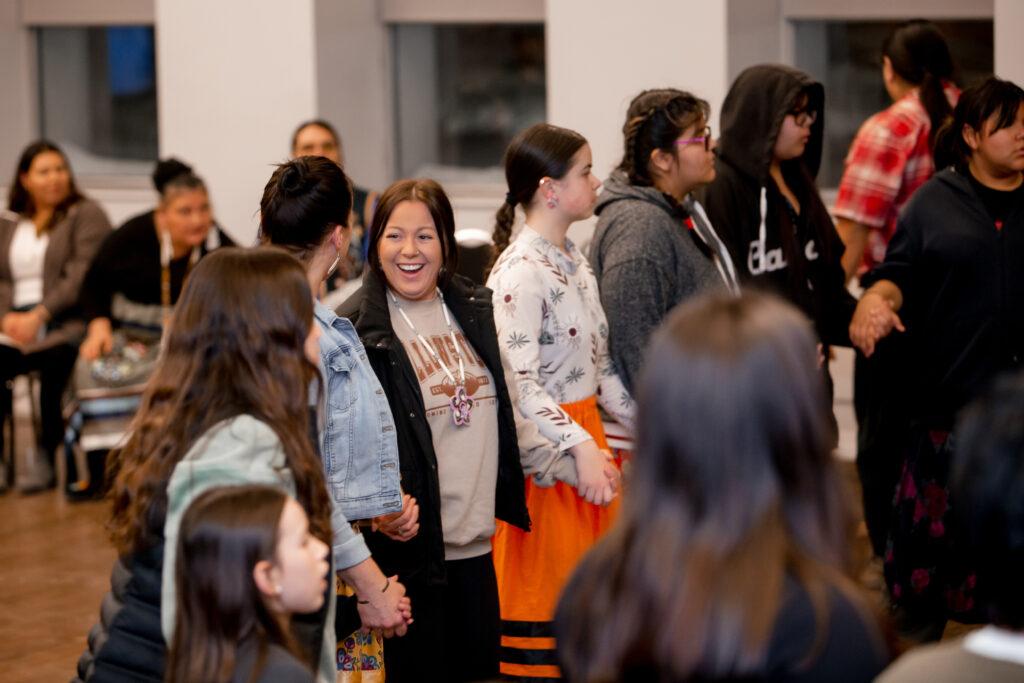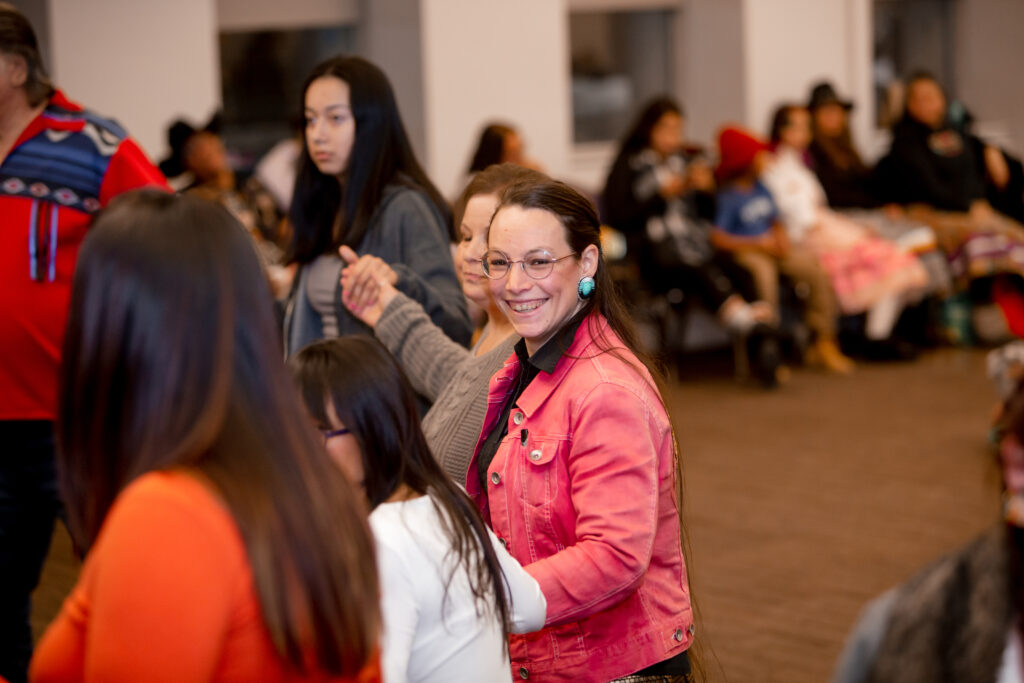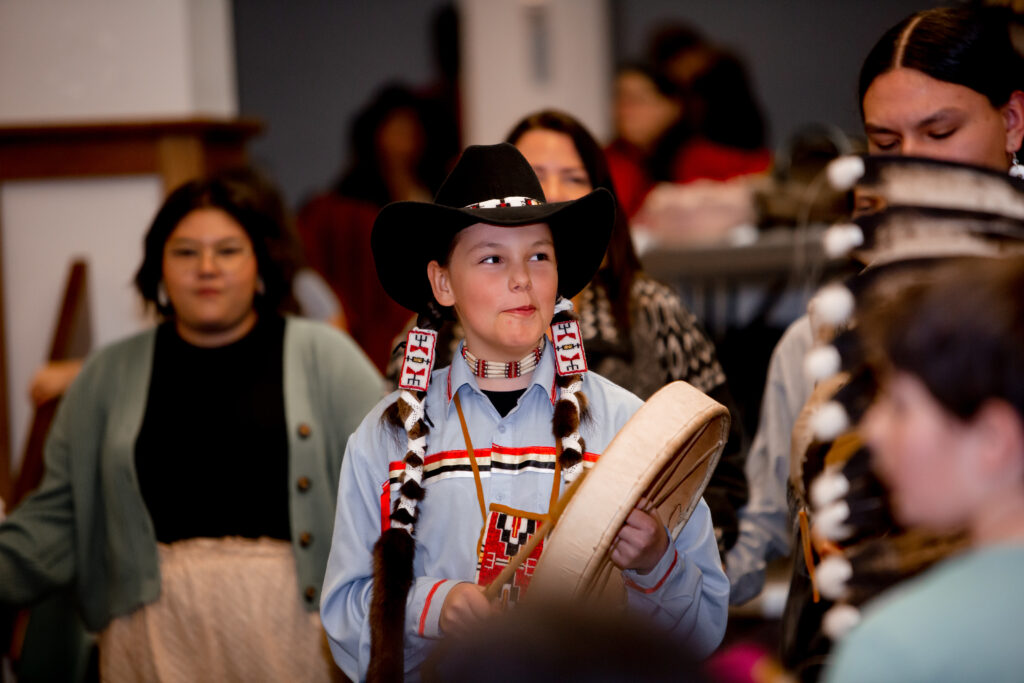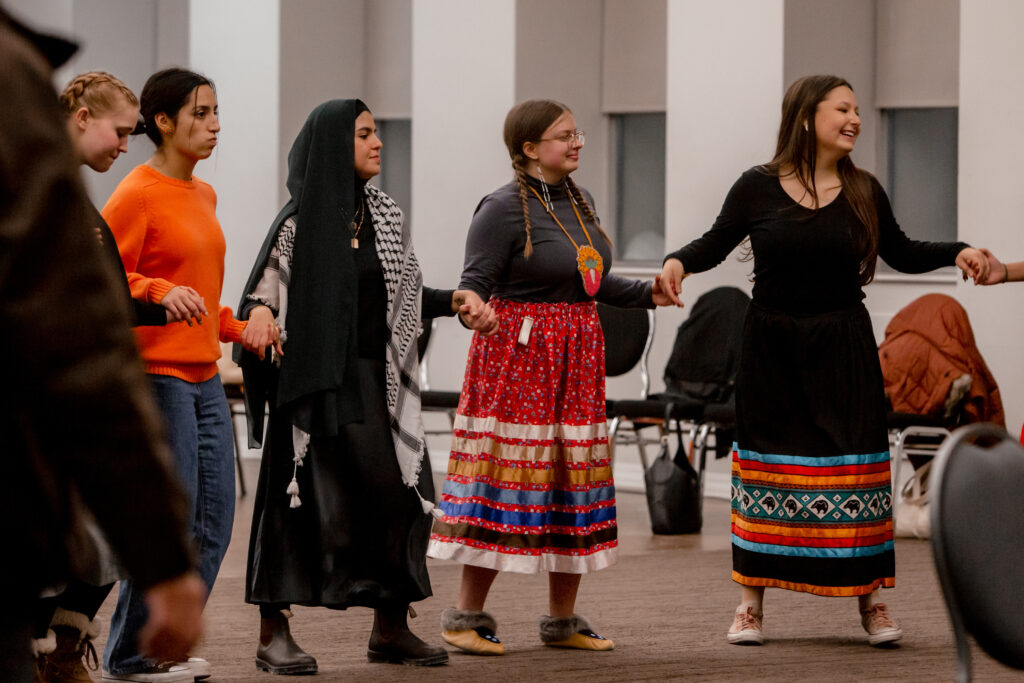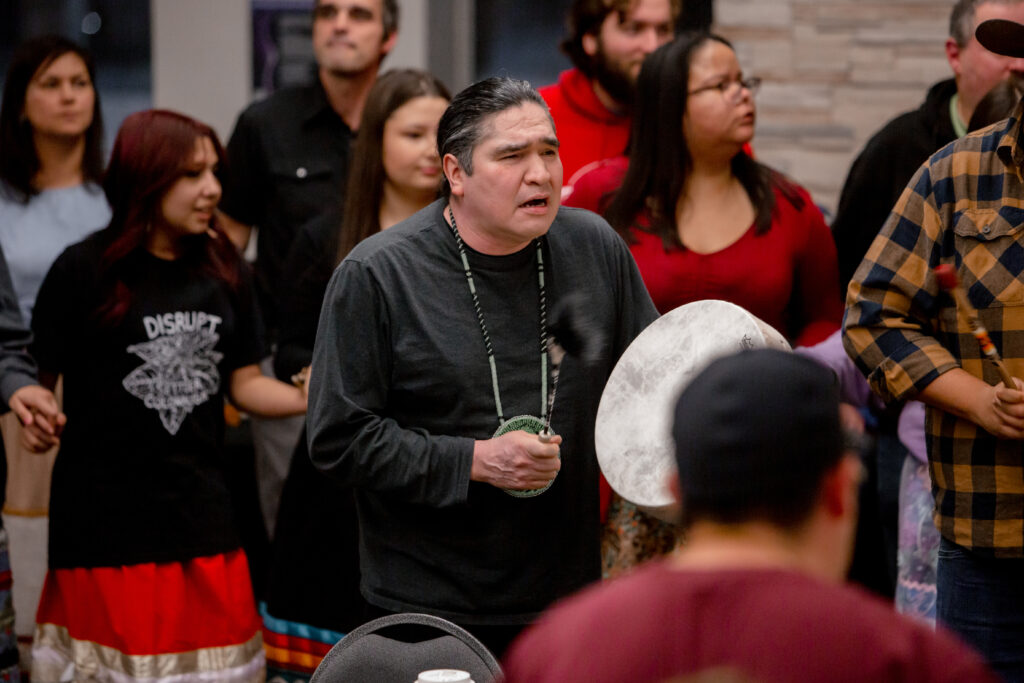Indigenous Round Dance at Carleton creates an evening of community and sharing
By: Linda Hartwell
Photos by: Tracey Lynne Towedo
On Saturday, Jan. 20, more than 200 people gathered at Carleton University for a Round Dance, a tradition as old as the land on which the university campus is located. Hosted by the Centre for Indigenous Support and Community Engagement (CISCE), the Round Dance is a living testament of the enduring spirit of the Indigenous community—a timeless ceremony that bridges the gap between the past and the present.
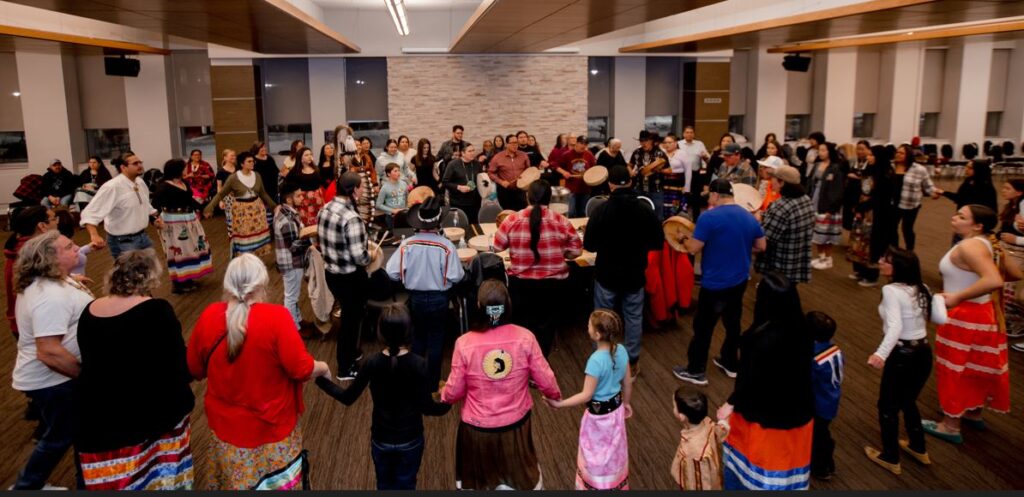
“For me, it’s really important for Carleton to hold events like the Round Dance,” said Hanna Zamiska, an Anishinaabekwe fourth-year Global and International Studies student. “When you move away from home and your community, you often find yourself lost, not knowing where to find ceremony. It’s not only important because ceremony is important but is has also allowed me to find a community here and an opportunity to share my culture with my non-Indigenous friends. This event helped me fill my heart with happiness and love.”
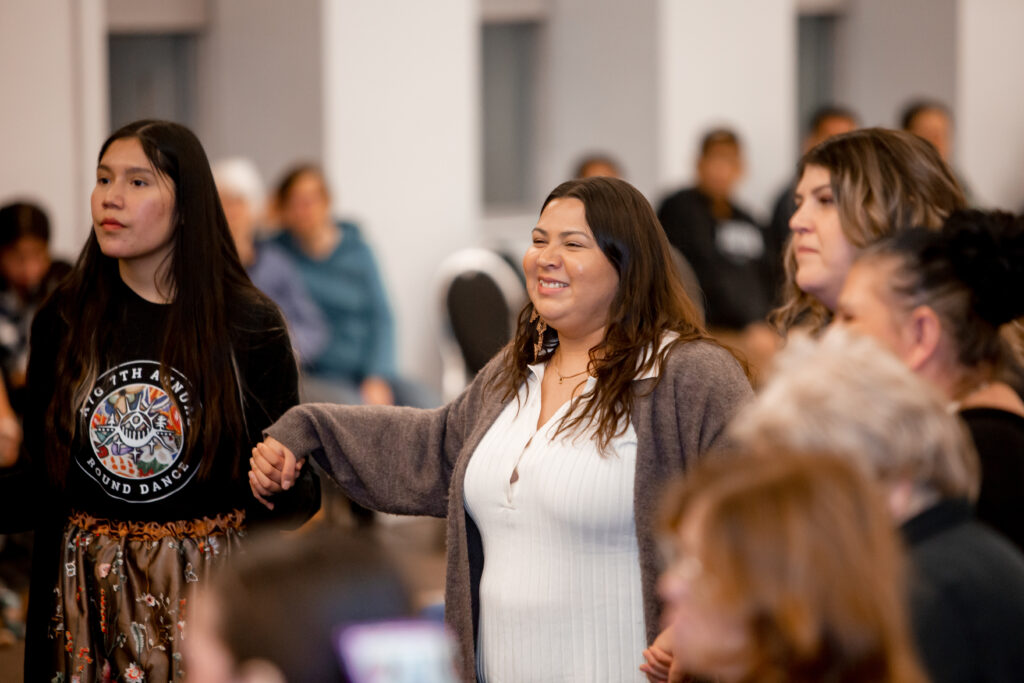
A Round Dance is a traditional Indigenous event usually held in the winter that brings people together to heal, honour and celebrate life. Pipe carriers lift their pipes and pray, followed by a traditional feast and the calling song, the first song of the evening, asking Creator to invite ancestors to join the celebration.
“The Round Dance is used for healing and is a ceremony that includes traditional protocols,” said David Hookimaw, Anishinaabe cultural advisor and one of the night’s singers. “We call on our ancestors to join us and throughout the night we are together through song and dance.”

Frankie LaFrance, Indigenous Academic Advisor, for CISCE, delivered opening remarks welcoming everyone and providing a special Chi-miigwech “big thank you” to Elders Louella Tobias, Barry Sarazin and Thomas Loutitt.
Following the opening ceremony, nine drummers and singers gathered in the centre of the room while Gabriel Whiteduck from Kitigan Zibi, Anishinaabeg and emcee for the evening, invited dancers, some adorned in vibrant regalia, to join hands forming a circle for each song. Dancers moved in unison to the rhythmic beat of the drums and the voices of singers echoed through the room, creating a pulse that connected the hearts of those – both Indigenous and non-Indigenous – who came together for the evening.

“This is a feast that has been done for thousands of years. These songs and these ways have passed from generation to generation,’’ said Whiteduck. “We feast our ancestors who have passed on to the spirit world and use the tools given to us by the Creator, including pipes and drums, and we petition the Creator to invite our ancestors here into this lodge, with song. It is our understanding and belief that whatever we do, our ancestors also do. When we eat, our ancestors eat. When we sing, they sing. When we dance, they dance.”
The dance is not just a physical movement; it is a celebration of heritage, a way to honor ancestors and a means of fostering unity among guests.
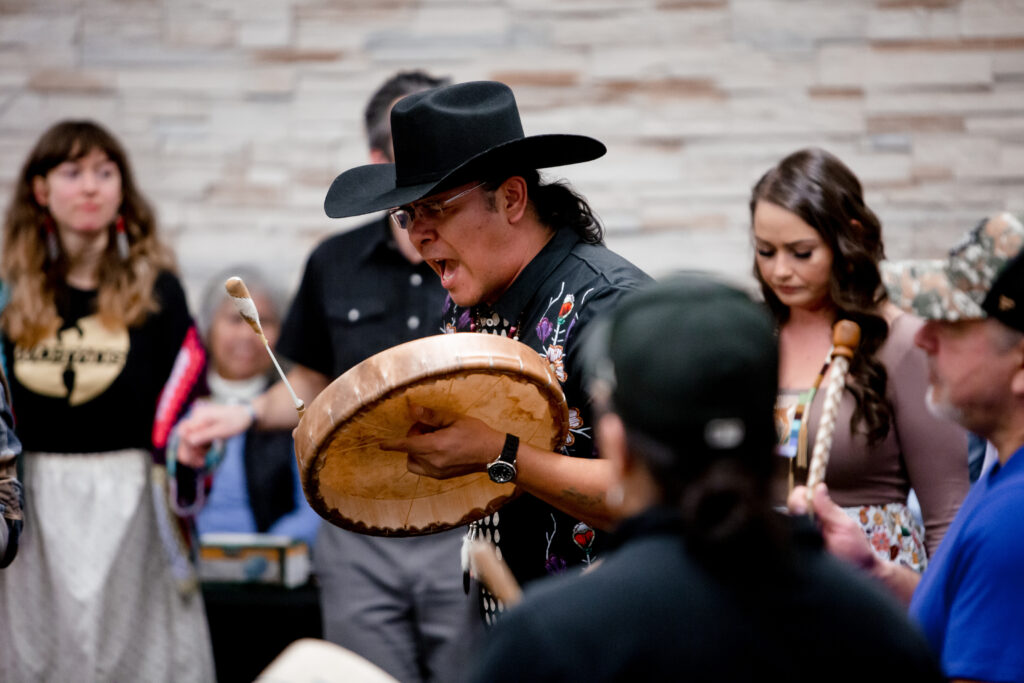
The importance of bringing Indigenous community members to Carleton is not lost on Benny Michaud, the Director of CISCE and Metis citizen.
“Part of paying the rent and living on stolen Indigenous lands mean opening up privileged spaces like this one at Carleton in order to host cultural gatherings at no cost to the community” Michaud says. “Winter is a time when we come together to share stories that can’t be told at other times of the year and some round dances provide a wonderful opportunity for that sharing to occur. It’s a way to keep our home fire burning and honour the many relations we have that support our work.”
On Saturday night, those dancing in Fenn Lounge moved with purpose, connecting the many generations in attendance and creating memories that will echo through time.
